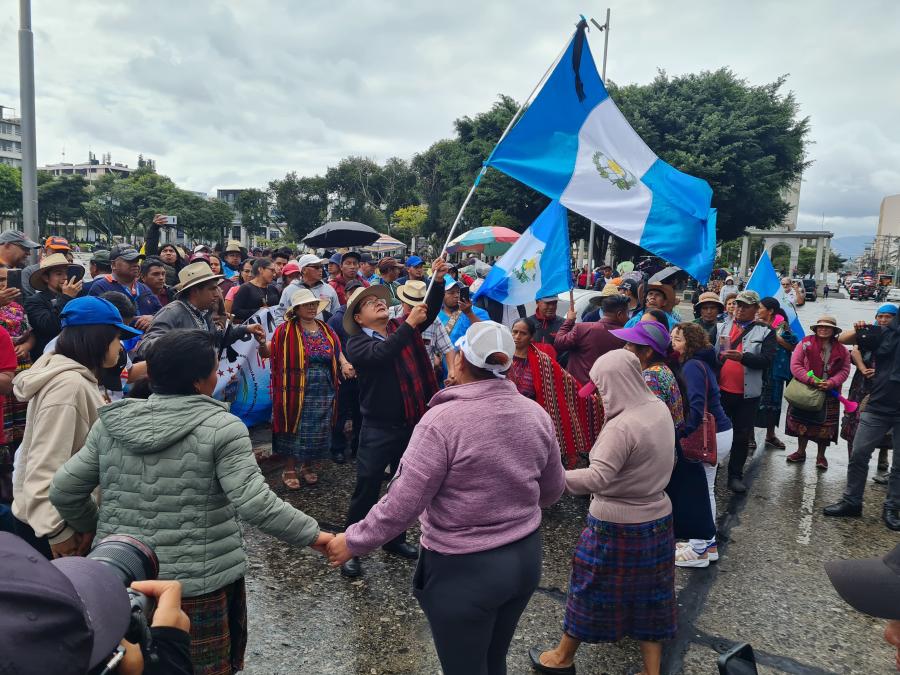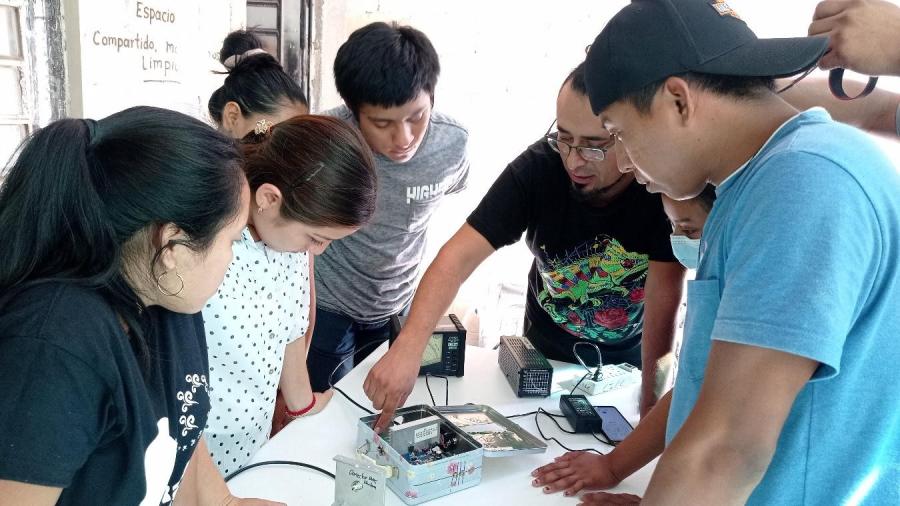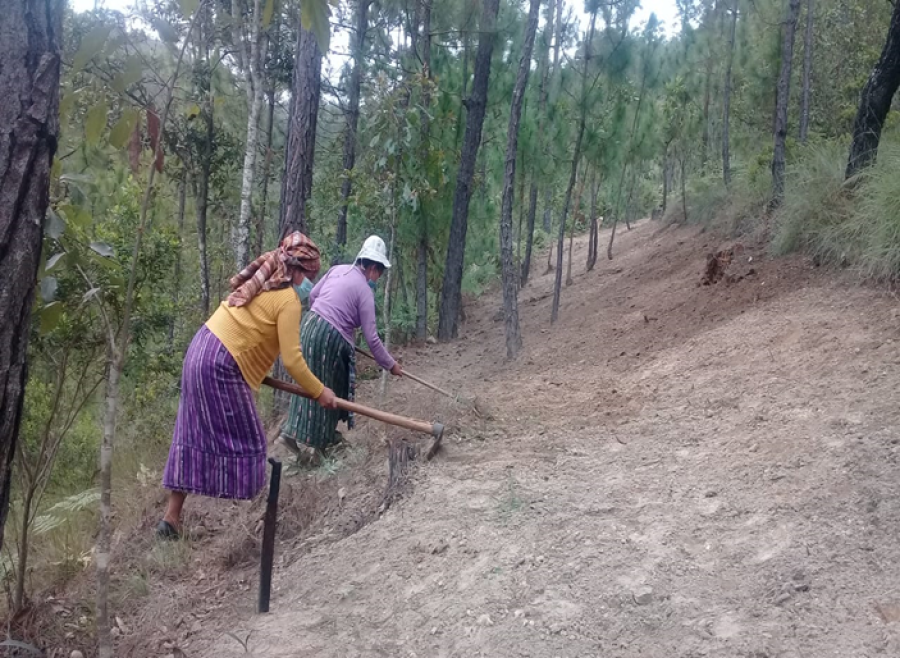
By Kajkoj Máximo Ba Tiul (Maya Poqomchí')
Guatemala: Years of Contempt and Abandonment
Guatemala has a population of close to 18 million inhabitants, mostly Indigenous, although the last census reported the population at 40 percent. The Indigenous population is made up of four Nations known as the Maya, Xinka, Garifuna, and Ladino Peoples. The Maya Nation is the largest, with 23 distinct Peoples. This composition of its inhabitants makes Guatemala a plurinational country.
Like all Latin American countries, Guatemala has a long history of dictatorships and repression. Since the Spanish colonization in 1524, when Christopher Columbus arrived in Guatemala, Indigenous Peoples have had to dispute political spaces with the criollos/oligarchs/bourgeoisie. The latter have dedicated themselves to plundering Indigenous territories, a practice that is still ongoing. This social class, which became dominant during colonization, also developed extermination policies against the Indigenous population, thus executing several genocides: Spanish colonization between 1524-1821; German colonization between 1870-1900; military dictatorships between 1962-1996; and extractivism from 2000 to the present day. The policies of extermination and control against Indigenous Peoples were not enough to put an end to the communities that defend their land and territory.
Indigenous Peoples, mainly women and children, are the ones who live in the most unequal conditions. This situation is manifested in the fact that they are the least favored in public policies on health, education, housing, work, and decent employment, among others. In the Indigenous territories, there is more malnutrition and other diseases that are the cause of death of many children and pregnant women. The lack of means of communication, access roads, and hospitals, also worsens the health of the members of the Indigenous Peoples; added to this are the constant evictions in their territories, promoted by landowners, narco-landlords, and owners of multinational companies, in collusion with the State, which with impunity and under the modality of corruption grants Indigenous territories for their destruction.
Guatemala is one of the countries in Latin America that has the most commitments to adhere to policies for the benefit of Indigenous Peoples living in its territory. It is party to a majority of international human rights instruments and the rights of Indigenous Peoples, but in reality, it is one of the most racist and discriminatory countries in practice. Guatemalan society, mainly Guatemalan criollos and oligarchs, promotes hate speech against Indigenous Peoples. This situation has manifested itself very strongly in recent mobilizations against corruption and impunity. Corruption and impunity, led by a group of criminals, is the reason why many Guatemalans, mainly Indigenous Peoples, live in subhuman situations, who have also experienced judicial persecution for defending their lands and territories.
Why the Indigenous Mobilizations?
Since the arrival of the colonizers in the Caribbean in 1492 and in Guatemala in 1524, the Indigenous Peoples of the continent have always resisted. European colonization was not easy. In Guatemala, from the first moments of colonization and the Spanish invasion, the Indigenous Peoples rebelled; for example, the Itz'a People in the Petén, in the north of Guatemala, were not dominated until approximately 1667.
Books and titles written by Indigenous authors around the time of the invasion give an account of the fierce fight that the Indigenous peoples put forth. “The Chilam B'alam”, the main book of the Kaqchikel Peoples, relates these facts. Titles such as that of Ixquin Nehaib', Title of Totonicapán, Title of Ajpop Huitzitzil Tz'unun, and Titles of Kojaj, are important evidence of how the Peoples of that time resisted the imposition of a new system of life. Other books written by Spanish chroniclers, such as Francisco Antonio Fuentes y Guzmán, Pedro Cortes y Larraz, Vasconcelos, Tovilla, Viana, Gallegos, Villagutierre Soto-Maya and others, tell us that the Original Peoples did not remain static in the face of the entire European invasion, initiated for the first time in 1492 with Christopher Columbus, and in Guatemala, by Pedro de Alvarado in 1524.
In this way, we can see in the long history of Indigenous Peoples a constant mobilization, with different nuances in each historical moment. The motivations of the Indigenous rebellions in the first years of the invasion are not the same as those of the first years of independence, those of the mobilizations or uprisings during the Cold War, those that took place in the first years of extractivism, and the mobilizations of today.
The first mobilizations, which began in 1524, were against Spanish colonization, for the dispossession of Indigenous territories, and for turning the people into servants of the crown and the church. In the years prior to independence, the mobilizations were against taxes when the Cortes of Cadiz had already suppressed them, and the criollos, violating these colonial laws, continued to oppress the people, forcing them to continue paying taxes.
During the military and dictatorial governments such as the periods of Carrera, Justo Rufino Barrios, Ubico, Ydigoras Fuentes, Arana Osorio, Kjell Laugerud Garcia, Lucas Garcia, Rios Mont, Ubico, the mobilizations were peasant and Indigenous, mainly for land demands, such as the Panzón mobilization of 1978. After the signing of the Peace Accords, indigenous and peasant movements developed against extractivism, similar to the mobilization of the miners of Ixtahuacán in 1977. In more recent years, the march of Q'eqchi, Poqomchi, and Achi Mayan Peoples, which left Cobán in 2012, and later, the march of San Juan Sacatepéquez, the resistance of Río Dolores, the resistance of La Puya, and the resistance of Sierra de Las Minas, took place.
The Constant Dispute between Indigenous Peoples and the State
A few years after the signing of the 1996 Peace Accords, Guatemala began a process of regression. A reform that sought to reform the Constitution in accordance with the peace commitments imposed the symbolic demobilization of army posts, although not of its active personnel, and the use of Indigenous offices as political spoils. Offices such as the Academy of Mayan Languages, the Indigenous Fund of Guatemala, the Commission against Discrimination and Racism, the Indigenous Women's Defense Office, the Popular Fund for Housing, the Directorate of Intercultural Bilingual Education, and the Indigenous Secretariats were absorbed into different State institutions such as the Supreme Court of Justice, the Public Ministry, and the Ministry of Labor.
At the same time, the Indigenous Peoples became fundamental to stopping new plundering promoted by the extractive companies. Hydroelectric dams, African palm, and mining were the main activities of national and international business, leaving negative balances in the communities of Indigenous Peoples, such as disappearances, murders, imprisonment, persecution, land dispossession, and migration. This goes far beyond what we know as criminalization policies.
From that moment on, Indigenous Peoples reactivated the practice of constant mobilization, demanding rights. Just as they did in the early years of extractivism, they also did so when the transitional justice model began to regress, with the Constitutional Court's decision to reverse the trial against Ríos Montt two days after the sentence in 2013.
In 2015, when the mobilization against the corruption of Roxana Baldetti and Otto Pérez Molina took place, the parks in the interior of the country, especially in cities such as Quetzaltenango, Huehuetenango, and Cobán, were the scene of the mobilization of Indigenous communities that demanded the non-compliance of projects that had been programmed by mayors, deputies, and departmental development councils to be executed in Indigenous communities. In this sense, the shortage of personnel and supplies in and for the teaching and health sectors has also been the cause of constant Indigenous mobilization.
Why the Indigenous Mobilization in 2023?
The abandonment in which the Indigenous communities find themselves due to corruption is surpassing the situation of previous years. The criminal pact that controls the country does not want the results of the general elections of August 20 and promotes a coup d'état "in slow motion" to govern by means of a disguised dictatorship. This again forced the authorities of the Indigenous Peoples, mainly of the Maya and Xinka Nations, to call for more than 40 days a mobilization to restore constitutional order and democracy.
The Mayan Indigenous authorities of the 23 Mayan villages and the Xinka Peoples began to be recognized as important characters for change in the country and as historical political subjects. They had to come to the capital, traveling many kilometers, enduring water shortages, the hot sun, and eating whatever was available. They spared no effort, and just as their ancestors did, they decided once again to face racism, discrimination, and exclusion. They came to the capital and the most important urban areas of the country to join the insurgencies born from the marginal neighborhoods, which also suffer the onslaught of capitalism.
The Indigenous Peoples of Guatemala, like the Indigenous Peoples of the world, began their walk, their mobilization, rebelling against the system, telling the corrupt and criminal Guatemalans "that they were the descendants of those who for many centuries they wanted to destroy." They spoke to the corrupt and criminals in their own languages, with their own content and narrative, through their own media that, little by little, were replicated by other media. They gained space.
Among the demands of the Indigenous Peoples was the reestablishment of the rule of law and respect for democracy. They demanded the resignation of Attorney General Consuelo Porras, Special Prosecutor against Impunity Rafael Curruchiche, Prosecutor Cinthya Monterroso, and Judge Fredy Orellana, accusing the Foundation against Terrorism and others as perpetrators of the coup d'etat as those who destabilized the country through illegal actions. The Indigenous Peoples demanded that the business chambers, the Catholic Church, and other organizations speak out against the coup and in favor of democracy.
They knew that they were going to be received by the Guatemalan right and extreme right with conservative and racist speeches, accusing them of not knowing what they wanted. Even the constitutional articles do not refer to the Indigenous Peoples as Peoples but as communities to be protected. At the national level, they are treated as cultural elements and not as subjects of change, law, or political subjects. Sometimes, they are labeled as leftists, and sometimes as having no ideology because the only accepted ideologies are the "right" and the "left," nothing else. Marx or Friedman, Engels, Lenin, Hayek, or God or the devil. It is not thought that people can have their own ideology, based on a different economic, political, social and religious system.
That is why it is not understood that when the Indigenous Peoples in Guatemala call for the defense of "democracy," they are not saying that everything should change so that, in the end, nothing changes. The narrative of democracy does not refer to the same democracy that has only been a straitjacket for the demand for rights. Indigenous Peoples are calling for the reestablishment of democracy so that, from there, the re-foundation of everything, including the political and economic system, can begin.
Today's struggle is not so that we stay where we are. It aims to go further. The Indigenous mobilization today is a rebellion, yes, because it is anti-systemic. It is the product of the rage in the minds and hearts of men and women who suffer the scourge of a failed system, of those who daily see children die of malnutrition, of women before giving birth. Of those who daily see the dispossession of land and the policy of eviction imposed by the landowners and the racist and discriminatory State.
This mobilization, which today celebrates its 100th day, is not a coincidence. It was built little by little. It is neither right-wing nor left-wing. It is a movement of Indigenous Peoples, with its own organic structure, its own narrative, and its own political project. It was built slowly and was nourished by the weariness of an entire citizenry against the Guatemalan criminal group. It is a movement with dignity. It does not have to ask permission from the left or the right; this movement has surpassed even the historical social movements. It is a movement that feeds on the cyclical time of the Indigenous. It is as they themselves say: "a rehearsal", a "nuk'uj", or "we are making our way, and we make it as we go." It is the beginning of a new dawn. It is the way to retake the path traced by their ancestors but to go further.
Indigenous Peoples are here and will continue to be here, even if the system wants to end them. They are there to defend everyone. They are there to establish a new world and many worlds for all. They will be there if another blow from the oppressive system begins if it is announced that those who were in the resistance will be persecuted, or if the leaders of the resistance are captured. The Indigenous Peoples will call for articulation in their own ways, as their ancestors did before when they confronted the Spaniards. The struggle of the peoples will be here to reestablish harmony and balance as a fundamental principle of the thinking of the Original Peoples.
-- Kajkoj Máximo Ba Tiul is a Maya Poqomchí anthropologist, philosopher, theologian, researcher, and analyst.
Photo above: Prensa Comunitaria



